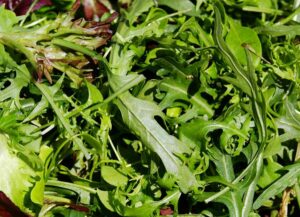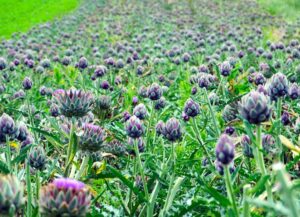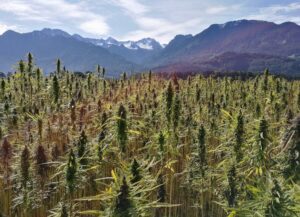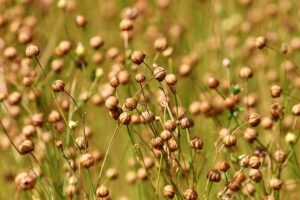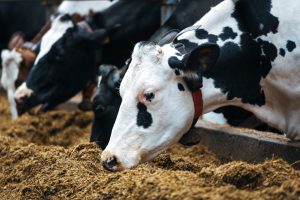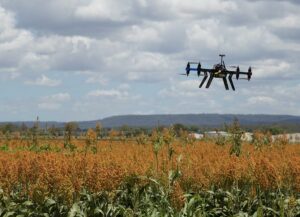Maria Villagrasa & Fernando Diaz
The transition period is characterized by metabolic and physiological changes that disrupt immunity, energy balance and antioxidant stability in dairy cows. In addition, reducing nutrient intake during this period can lead to the development of metabolic disorders.
It has been suggested that the use of phytobiotics may be an effective strategy to prevent the onset of various diseases and improve production at that stage. Moringa (Moringa oleifera) is an evergreen tree that is increasingly considered as an alternative animal feed due to its high content in protein, vitamins and minerals.
The genus Moringa belongs to the family Moringaceae, which includes 13 species, the best-known being M. oleifera. Native to the southern Himalayas, northeastern India, Bangladesh, Afghanistan and Pakistan, it has been widely introduced in other regions of the world including most African countries and Central America.
Its forage production varies between 24 and 99 T/ha year (dry matter, DM) and stands out mainly for its high protein content in its leaves ranging from 15.0 to more than 30.0% of the DM depending on the stage of maturity and the proportion of petioles and stems.
It is also rich in vitamins A, B complex including vitamin C, calcium, iron and two essential amino acids, methionine and cysteine. In addition, the saponins, tannins and polysaccharides it contains have anti-inflammatory, antioxidant and antimicrobial properties and may improve milk composition and production.
A study was recently conducted (Kekana et al., 2020) to assess the effects of Moringa oleifera leaf flour supplementation on the physiological responses and milk production of cows in transition.
The treatments consisted of three increasing doses of Moringa leaf flour at the following concentrations (% DM):
- M0: no Moringa (control)
- M30: 0.83% Moringa
- M60: 1.66% Moringa
The flour was diluted in 500 ml of warm water before being administered orally to a total of 48 Holstein cows from 35 days before delivery to 21 days in milk. All cows received a total mixed ration during the dry period and lactation. The composition of Moringa leaf meal on a DM basis was as follows: DM 91.1%, protein 30.2%, fat 5.17%, and ash 7.64%.
Milk fat and protein increased with Moringa supplementation
Dry matter intake was not affected by the Moringa supplement (21.2 kg/d). However, energy-corrected milk production increased significantly in cows receiving Moringa (M0 = 29.7; M30 = 32.1 and M60 = 34.0 kg of milk/day). Similarly, it increased the concentration of milk fat from 3.42% in control cows to 3.97% in the M60 group, which increased total fat production (M0 = 1.04; M30 = 1.17 and M60 = 1.24 kg of fat/day).
With protein something similar happened: the concentration in the control group was 2.89% and increased linearly to 3.43% in the cows of the M60 group, which caused it to increase the total protein production (M0 = 0.88; M30 = 0.95 and M60 = 1.07 kg of protein/day). These results indicate that Moringa supplementation improved performance without increasing dry matter intake.
The study also assessed somatic cell counts (SCC), an indicator of the overall health status of the udder which, in this case, was lower for cows in the M60 treatment (M0 = 344; M30 = 292 and M60 = 245 x 1,000 cells/ml) indicating that Moringa supplementation improved udder health. A low incidence of mastitis was also observed in other studies in which cows were fed flavonoid-rich herbal supplements.
For immunoglobulins, the highest concentrations of blood IgG were found in cows in the M60 treatment (M0 = 28.6; M30 = 30.7 and M60 = 33.1 g IgG/l) similar to those of total globulins (M0 = 40.6; M30 = 42.4 and M60 = 46.1 g Globulins/l). Treatment had no effect on blood urea nitrogen (4.28 mmol/l) or the concentration of albumins in blood (25.8 g/l) although it was observed that they tended to increase at higher Moringa concentrations. Increased total globulins and albumins could indicate that Moringa supplementation improves the efficiency of protein utilization.
On the other hand, significant differences in the concentration of β-hydroxy-butyrate (BHB) were found to be higher in cows of the M60 group (M0 = 0.59; M30 = 0.64 and M60 = 0.66 mmol BHB/l), something that also happened with glucose (M0 = 47.6; M30 = 49.6 and M60 = 51.2 mg glucose/dl). Treatment had no effect on non-esterified fatty acids (NEFA; 0.51 mmol/l).
High concentrations of NEFA (above 0.7 mmol/l) and ketone bodies mainly BHB in serum, indicate that there is a severe negative energy balance that can result in ketosis. In this study, while BHB levels might indicate risk of ketosis, NEFA concentrations were within the normal range for a balanced energy status. The beneficial effects of Moringa could also be due to increased glucose concentration as low levels are related to high serum concentrations of NEFA and BHB.
Antioxidant activity
Moringa supplementation had an effect on all antioxidant enzymes that were analyzed in this study. Increasing Moringa in the diet increased the activity of superoxide dismutase, glutathione peroxidase and catalase as well as the serum antioxidant capacity. Instead, it reduced the values of malondialdehyde.
These results indicate that Moringa improved milk antioxidant capacity by reducing oxidative stress, which could be attributed to the joint effects of the high antioxidant, phenolic and flavonoid nutrients contained in the feedstuff.
Milk with high antioxidant content is more likely to not deteriorate and have a longer shelf life. Therefore, increasing antioxidant capacity along with reducing SCC could increase the quality and health benefits of milk both for newborn calves and human consumption, thus promoting good health and preventing diseases associated with oxidative stress.
Conclusion
The results of this study indicated that:
- Oral supplementation with 1.66% of Moringa improved the health and antioxidant status of dairy cows in transition
- Milk was high in fat and protein as well as having a high antioxidant capacity
- Low SCC indicated better udder health
Therefore, supplementation with 1.66% Moringa is recommended for dairy cows during peripartum period.
Reference
T.W. Kekana, U. Marumea, M.C. Muyac, F.V. Nherera-Chokudad. Periparturient antioxidant enzymes, haematological profile and milk production of dairy cows supplemented with Moringa oleifera leaf meal. Animal Feed Science and Technology 268 (2020) 114606.
© 2020 Dairy Knowledge Center. All Rights Reserved.



